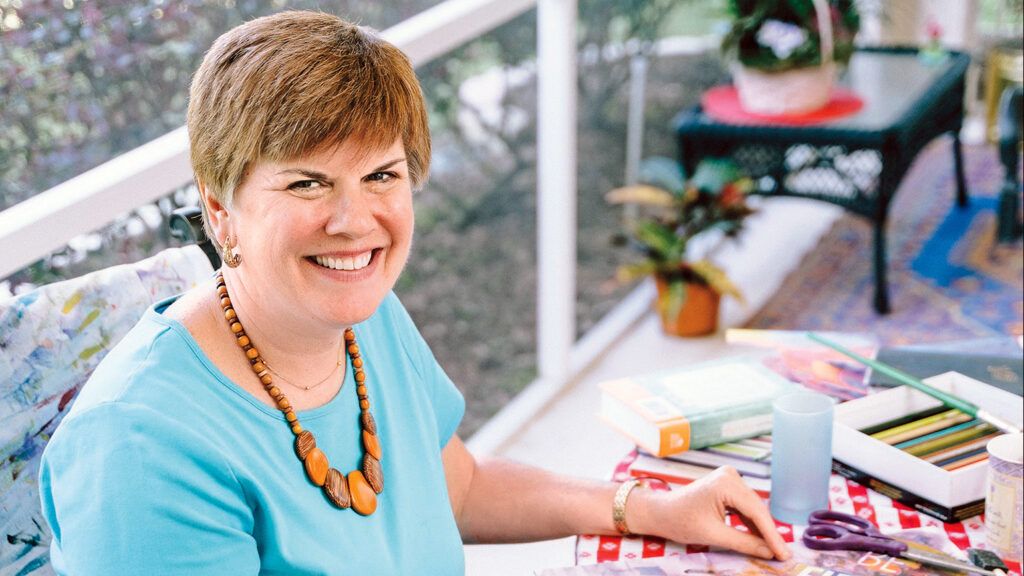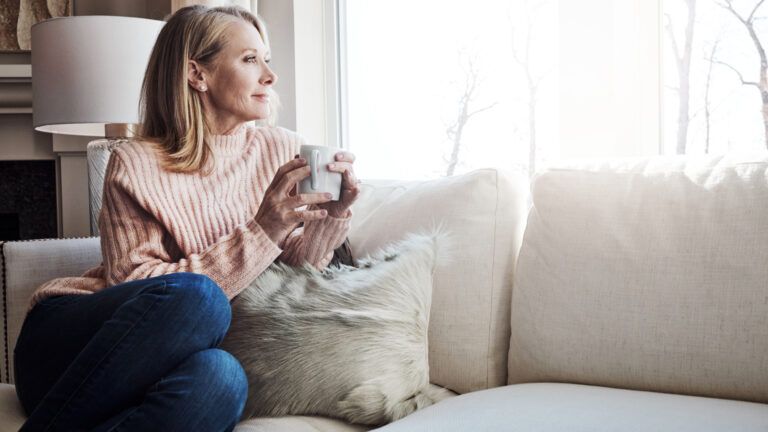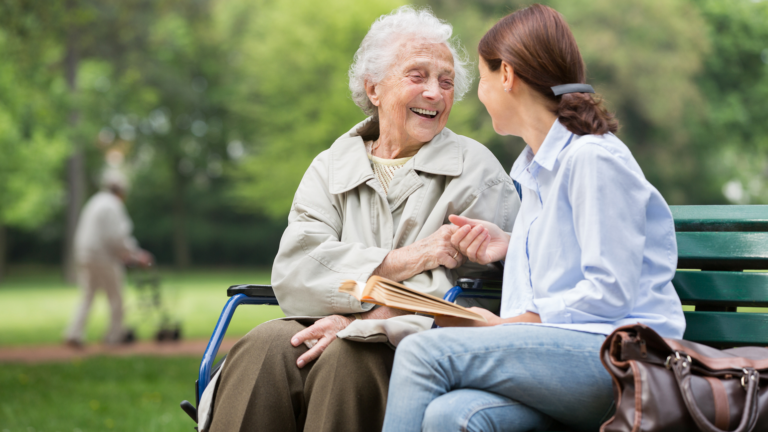The e-mail came from Tony’s son, Phil, asking if I could help his dad. Tony was a retired businessman in his late eighties, suffering from dementia. He was getting excellent care in an assisted-living facility, except for one thing. “Pop loved to paint more than anything,” Phil wrote. “I wonder if you could help him do it again.”
“I’m not really an artist,” I wanted to say. Actually, I was a flight attendant. True, I worked on weekends at a rehabilitation center, teaching art as therapy, helping people who were recovering from falls or broken limbs or long hospital stays. Art gave them a purpose, I liked to think. But I’d always worked with groups, never with someone one-on-one and never with a dementia patient.
Phil explained how his dad had become quiet, withdrawn. Once he had painted, and it had seemed to give him great satisfaction. If only he could have a brush in hand again. “It would mean so much to him,” Phil said. “To have that joy again.”
The joy of painting. The idea tugged at my heart. If there was anything I knew, it was how God could use the arts—painting, drawing, sculpting, music making—to help people find their way back to themselves, their best selves. As I said, I’m not a professional artist. But art came to me at a time when I desperately needed help.
Let me go back two decades. I was living in Atlanta and working long hours for Delta Airlines. I’d served as a flight attendant and then made my way up the management ranks. I could see myself running the place someday, being in charge. Not that the dream was wholly my own. It felt like an expectation, almost as though I’d borrowed it and was trying it on for size, like a nice suit that doesn’t quite fit.
Then came a string of disasters, real disasters. First, the tornado. I was lying in bed one evening in my top-floor apartment, worried about a presentation I had to give the next morning. Wind and rain battered the roof and walls. What if the windows break? I wondered. I could picture shards of glass flying at me like hail. Get in the closet! the thought came. I grabbed my pillow and comforter—and my alarm clock—and threw myself into the closet.
Almost instantly my ears popped. The wind made a nightmarish sound. The roof was sucked off, and rain poured in. I screamed at the top of my lungs. Never had I been so terrified. When the din finally died down—after a few minutes that seemed like forever—I peeked out from under my comforter. My bed had been turned upside down, the place destroyed.
Three months later, I was in a terrible car accident. An 18-wheeler swerved into my lane on the highway and pushed me off the road. My car was totaled. The driver fled.
The third disaster affected me in a different way. Flight attendants and crew members like me, as well as passengers, were lost when Swissair Flight 111 crashed off the coast of Nova Scotia, killing everyone on board. Because Swissair and Delta were partners, I was put to work helping staffers and volunteers console the families who were suffering this tragic loss, the sort of thing we had all trained for—and hoped we’d never have to do.
Again and again I told myself I was okay. I could manage. After all, I was helping others, wasn’t I? I was serving them. But at night, I’d wake up sweating, my ears seeming to pop, or have dreams of the 18-wheeler that had almost killed me or thoughts of a jet at the bottom of the sea. One weekend I went with a girlfriend to Disney World. We went on the Twister ride, thinking it would be fun. As soon as the lights dimmed, I was back in a twister of my own. I started screaming—shrieking actually. A young mother looked askance at me and asked my friend, “Would you please make her shut up?” But I couldn’t. I couldn’t stop.
Finally Delta arranged counseling for me. One of the things that was suggested was an art class, art as therapy. The woman in charge asked us to paint. Me paint? I hadn’t held a brush in my hand since grammar school. Our teacher wanted us to close our eyes and picture our dream landscape. What did it look like? What were we doing? Who else was there? Not only did we have to see it, we had to paint it.
I painted a beach, waves lapping against the shore, a dog frolicking in the sand next to a small house with a book inside. It was no great work of art, but it was mine. Just looking at it made me happy. “This could be your future,” the teacher said to me. “You could make it happen.”
I’d never thought of life that way. I’d been so immersed in work and getting the next paycheck that I’d lost all connection with my creative self. God hadn’t, though.
I quit the management job, stayed on as a flight attendant and moved to Florida. I rented a house near the beach and started reading the Good Book. I kept painting, not because I thought I’d create a masterpiece someday but because it brought joy to my life. I took classes in expressive arts, helping others experience what I had. I became a part-time teacher, working with groups, painting with them. I loved what I did. But did I have the skills to help someone like Tony? I just didn’t see how.
Phil took me to Tony’s apartment. I looked around at the paintings on the walls and felt completely intimidated. Vivid portraits, stunning landscapes—they were all things that Tony had done when he was younger. He’d been really good. One painting stood out for me. A beautiful depiction of Jesus. Linda, don’t be afraid, God seemed to say. Just be yourself.
I knelt by Tony’s chair. “Hi, I’m Linda,” I said. “What’s your name?”
“Tony Baby,” he said, then winked. We both laughed.
I took out my paints. At first he needed a little help with which end of the brush was which, but as I guided his hand his eyes lit up. He knew exactly where he wanted to put the strokes and which colors to use. We put on some music and painted for at least an hour, singing along with Frank Sinatra, “You Make Me Feel So Young.” Funny, it was Tony who made me feel young.
At the end, as I was cleaning up brushes, Phil asked, “So, Pop, what do you think?”
“About what?”
“About Linda.”
“When is she coming back?” he said.
Our art sessions became a highlight of my week. We’d play music, sing songs—Tony’s all-time favorite was “Moon River.” Whenever I flew someplace for work, I’d come back with pictures and we’d look at them together on my iPad. I showed him a video of the Christ the Redeemer statue in Rio de Janeiro. That inspired us to do a collage of Christ, arms stretched wide, embracing humanity.
We went outside and sketched by a lake, the clear blue water shimmering on the canvas. I came back from a trip to Grand Teton National Park, and we painted mountains. Tony had loved to ski back in the day. We listened to Bob Marley and sang along, “Don’t worry about a thing.” When I said goodbye to him that day, he replied, “Don’t you worry about a thing.” Tony hadn’t experienced the trauma I had, but painting had the same healing effect, transforming his final days.
On our last visit, two days before he died, he was so weak he couldn’t hold the brush by himself. I held his hand and guided it, and we painted. It was almost the way I felt guided by the Lord, bringing me here.
The memorial service was a few days later. As his children and grandchildren described the Tony they knew and loved, I recognized the man I had known only in the last year and a half of his life. Generous, creative, imaginative, kind, spiritual—despite the dementia. All those things were still there. Especially when he was allowed to do what he loved most.
Read more: 5 Ways to Engage a Senior with Dementia
For more inspiring stories, subscribe to Guideposts magazine.





